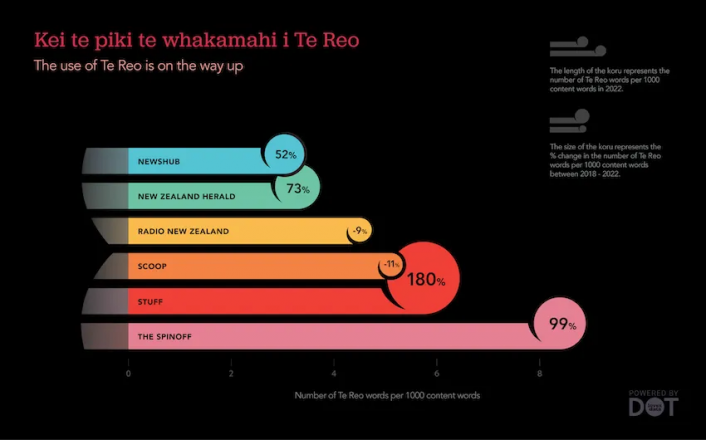The use of te reo Māori in New Zealand media continues to accelerate, according to data science specialists Dot Loves Data.
The company analysed 2.3 million media articles published between 2008 and 2022 by New Zealand’s six main media outlets to determine the frequency of Māori word usage.
The analysis showed the number of Māori words used in mainstream news articles steadily increased from 2008 to 2018, but surged dramatically between 2019 and 2022, largely due to an increase in usage by The Spinoff, Stuff and New Zealand Herald. The usage of Māori in content published by RNZ actually decreased by 9% over the same period.
Dot Loves Data co-founder Dr Paul Bracewell told The Spinoff that in 2008, the average usage of Māori was 2.2 words per 1000 content words. By 2022, this had increased to 5.3 words per 1000 content words – a 145% increase. Bracewell said that a sharp increase from 2019 was driven in large part by the government’s Covid-19 campaign, which made use of Māori translations.
Media outlet The Spinoff had the highest usage, averaging 8.9 Māori words per 1000 content words, with an increase of 99% over three years. This was followed by Stuff at 6.4 Māori words per 1000 content words, with an increase of 180% over the last three years.
Te reo Māori is one of the three official languages of New Zealand, along with English and New Zealand Sign Language. Over the last few years the government has pushed for increased usage of Māori in everyday life, including an increased emphasis in schools and the use of bilingual signs. In July this year, the country observed its first public holiday to recognise Matariki, a celebration that marks the beginning of the Māori new year.





























































